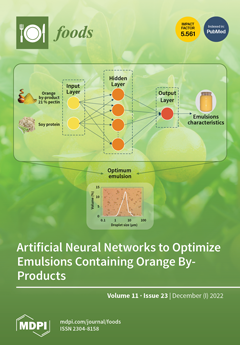Food security is related to human wellbeing and sustainable development and an important guarantee for world peace. In the context of global climate change, increased food demand, resource depletion, conflicts, and frequent public health emergencies, food security is widely seen as one of
[...] Read more.
Food security is related to human wellbeing and sustainable development and an important guarantee for world peace. In the context of global climate change, increased food demand, resource depletion, conflicts, and frequent public health emergencies, food security is widely seen as one of the top challenges. Food security research has obvious interdisciplinary characteristics, involving a wide range of fields. We analyzed the literature on food security in the Web of Science core collection from 1991 to 2021, using bibliometric methods with the aid of the Biblioshiny software package. By collecting, screening, analyzing, and visually expressing the literature data, the following conclusions were drawn: (1) In the past 30 years, the annual number of publications on food security increased. The period can be divided into three stages: 1991–2003 as the budding period, 2004–2012 as the development period, and 2013–2020 as the high-yield and active period. The top three journals discussing food security issues are
Food Security,
Sustainability, and
Food Policy, and these journals focus on the publication of comprehensive views from interdisciplinary perspectives. (2) Studies on food security cover 138 countries or regions. The top three countries in terms of the number of published articles are the United States, the United Kingdom, and China. Among the top 20 countries in terms of the number of published articles, European countries are highlighted. (3) Climate change, food security, agriculture, policy, and management are the other high-frequency keywords in the field of food security; climate change occurred 321 times. The word sub-Saharan Africa also occurred more frequently, indicating that food security in sub-Saharan Africa has attracted wide attention. (4) The food security theme mapping clearly showed the research status and future development trends of various topics in the field. Currently, food production, climate change, and sustainable development are the most popular themes. Research on food sovereignty, ecological agriculture, child obesity, and other aspects is an emerging field. (5) We predict that in the future, the field of food security may focus on the expansion and improvement of the food security evaluation system, the balance between sustainable development and food security goals, the improvement of agricultural production and management efficiency, and the research on government policies and strategies. Our results provide a reference for grasping the current situation, key research direction, and development trend in the field of food security.
Full article






